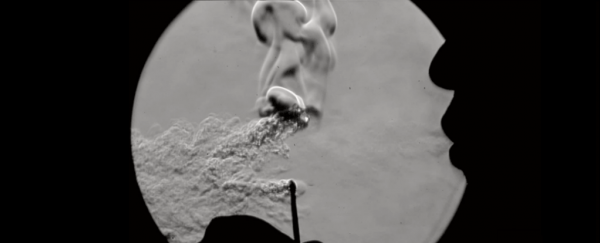Scientists at Stanford University in the US have combined high-speed video technology with schlieren imaging to reveal the absolute beautify of combustion that's imperceivable to the naked eye.
Entitled "The Hidden Complexities of the Simple Match", the video was one of three that won the 2014 Milton van Dyke Award at the recent meeting of the American Physical Society Division of Fluid Dynamics.
Led by Victor Miller, an expert in combustion imaging, the team recorded how the lighting of a stike-anywhere match looks when visualised through what's known as schlieren imaging. This technique, says Jim Gorman at The New York Times, requires a beam of light that has all its rays running parallel to each other, which are then deflected in such a way that they reveal the normally invisible changes in density that the gases emitted by a flame go through.
"If the patterns in the flame seem incredibly complex, that's because they are," says Gorman. "The mixing of the gases is an example of turbulence, which the Nobel Prize winner Richard P. Feynman called 'the most important unsolved problem of classical physics'."
The team, which also included mechanical engineers Matthew Tilghman and Ronald Hanson, describe their video at their YouTube page:
From start to finish, the entire video took less than two seconds to film, but high-speed imaging slows down the events so we can observe them; schlieren imaging enables us to visualise the hot combustion products mixing with the cold breath, which highlights the complexity and huge range of scales in turbulence. With this video, we aim to not only entertain and wow, but to also spark curiosity and interest in combustion and fluid dynamics.
Another team used the same technique recently to visualise sound waves, which you can actually see leaving a person's hands after they clap, at speeds of over 1,200 km/h.
Not enough match action for you? ScienceAlert has got you covered. Here's where you can watch the head of a match ignite and disintegrate at 4,000 frames per second. Sometimes the simplest things are the most captivating.
Sources: The New York Times, Stanford University
